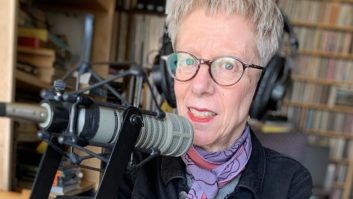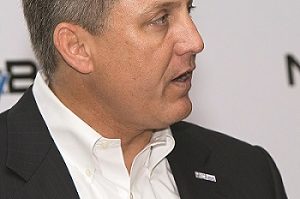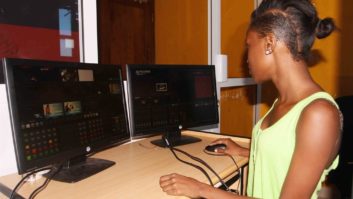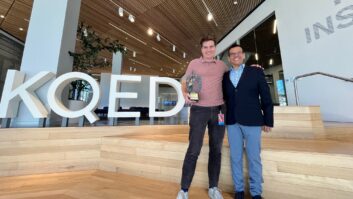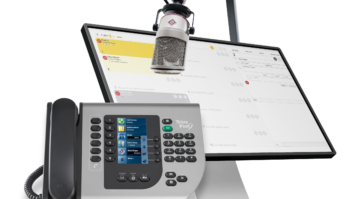Scott Stiefel became CEO of Telos Alliance in January of last year. We checked in with him and Executive Chairman Frank Foti about current developments.
Telos Alliance brands include Axia, Omnia, Telos, 25-Seven, Linear, Minnetonka and Infinity, and the company has a worldwide distribution agreement for Jünger Audio products.
Radio World: Update us on the state of the business.
Scott Stiefel: I’m fully situated now in the CEO role. We had an incredibly busy 2023 on the corporate side. We added around 10 people; and though there was uncertainty in the economy, with ripples throughout the industry and with ups and downs in the supply chain, we stayed the course. We’re quite profitable and will continue to expand.
We started our fiscal year, which began in November, with a roar. We’ve got a spate of products coming out around NAB Show time, and more slated for IBC. We’re always on the lookout for opportunities for mergers and acquisitions. And while our primary focus is still broadcasting, we have opportunities to look into adjacent markets too. So I’m really excited.
RW: How did fiscal ’23 compare to the prior year?
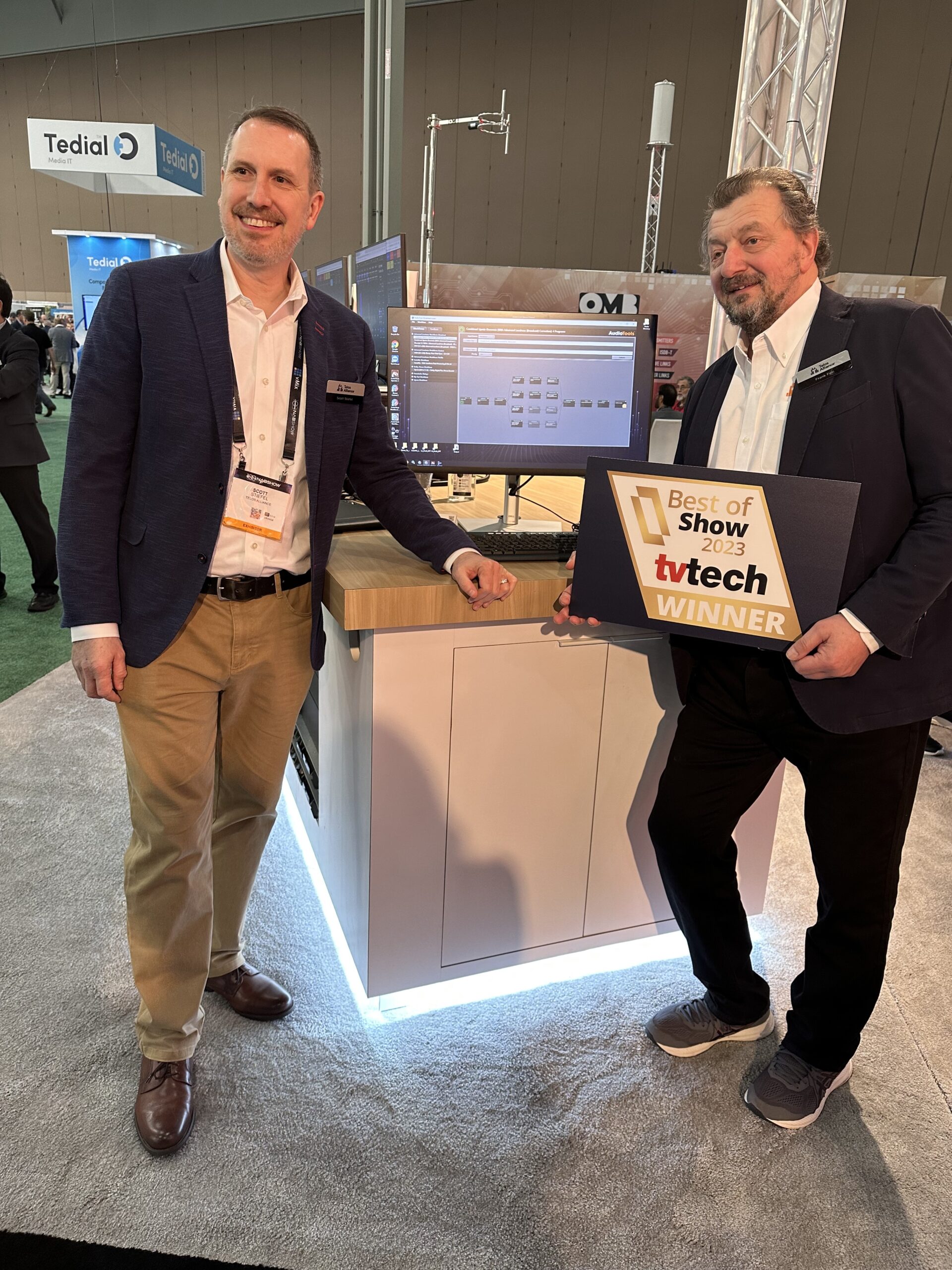
Stiefel: Revenue was on par, though bookings were down. We had an enormous backlog going into that fiscal year because of the supply chain, which helped us on the revenue side.
Then we started to see things pick up this September, and we really hit it out of the park as the new fiscal year started. We’ve started to see the recovery — sooner than we expected, actually.
RW: Frank, what are you working on?
Frank Foti: Behind the scenes, I’m still doing developmental work and research. The next generation of our tech is going to be containerized as well as hardware-related, so we’ve got things happening with regard to audio processing.
One concern for some broadcasters is the “codeability” of the Portable People Meter system with respect to certain talent and content. There are program segments and talent where the vocal spectrum is not 100% agreeable with how the PPM encoder works; I’ve been spending time on that issue.
I continue to work on my Déjà Vu surround upmixer as well as a 3D immersive application for headphones. There’s a lot we can do to make the listening experience in headphones or earbuds more exciting.
And I enjoy being able to empower others on our team in doing development work and bringing ideas to life. That’s reflected for instance in our new Forza product.
RW: Scott, what do trends toward a software-based world and virtualization portend for your business?
Stiefel: We’re looking at it as a huge opportunity. Telos has grown in quantum leaps at times when we were able to visualize applications of developing technology to broadcasting and capitalize on it — with perceptual coding, DSP, audio over IP, the prevalence of high-speed networks and so on.
The next shift is the incredible expansion of computing power, obsoleting discrete DSP chips and bespoke hardware. We’ve been thinking this way going back to the processing engines for the first Axia consoles. We’ve worked for years to position the software that we write for our hardware so it can also be nestled into high-density solutions, first in servers and then expandable into the cloud for virtualization. AoIP provides the backbone that allows interconnectivity of these different functions.
Beyond that, we’ve been taking DSP algorithms and moving them out of tiny chips to take advantage of multicore server processor platforms.
The next phase is to ask, “How would you think about audio processing if it didn’t exist solely in a box? If all the pieces of the audio processor could be rearranged in any way you wanted?” There are all sorts of opportunities through virtualization if we break these pieces into discrete components and are able to reassemble them quickly through software in any fashion we want.
Foti: I’ve always wanted a digital version of what we did back in the analog days. You’d take a Compeller and hardwire it to some Audio Prisms, and then to an Optimod, or you’d mix and match with your processing du jour.
Now you’ll be able to do that by buying into a library of functions. If you want to modify the architecture of what we offer, you’ll be able to point and click, move things around, hit “Apply” and, boom, there you go. And while I say it in respect to one product, you can have a whole ecosystem where you can do that.
There are people saying “Frank, I still need to have a box.” They’ll sleep better knowing there’s a box in their rack doing a dedicated thing. So we must serve two masters and walk that line. I want the marketplace to know that we will support hardware too.
Stiefel: We still live in a physical world, and some things are just better suited to hardware for the way people operate. For instance, endpoints. You need to get audio from the mic or from other sources onto your AoIP network, even if the processing is done in the cloud. People still feel comfortable controlling their mix with faders and buttons. So we’re continuing to invest in the human interface.
But another consideration is flexibility. How do you as the customer want to pay for something? What’s optimal for your operation? Do you buy a piece of software outright and own it? Do you buy the software with a service level agreement, so you get not only patches or bug fixes but also updated versions? Do you buy on subscription, where it’ll work for a year and automatically renew, but you can always turn it off?
Eventually, in the cloud, you get to a software-as-a-service model, where you pay just for the time you’re using the software, which is hosted remotely. We’re looking at those models as well.
And internally there’s the operations side. How do we deliver those licenses? How do we ensure cybersecurity so that things can’t be hacked? We want to present not only the best product but also a seamless experience to the customer.
RW: How would you characterize the health of the radio technology supply sector?
Stiefel: At least from our chair, we’re as healthy or healthier than we’ve been in decades. Shifts in technology provide us with opportunities, not threats of obsolescence, as long as we continue to learn and bring on staff who know how to do those things.
Content is still growing at an exponential rate. How will traditional broadcast suppliers adapt to how content is made, who’s making it and what those price points are? That continues to be a challenge.
Talking with people in podcasting, it’s fascinating to learn which platforms are successful. One person told me that when he uploads his audio podcast to the Apple or Google platform he gets maybe 400 downloads a week, but when he uploads the same content to YouTube, he gets 100,000 views. It’s orders of magnitude bigger than “traditional” podcast platforms. But conversations with him about the software or hardware to make a professional audio production are radically different than if I talk to a traditional broadcaster.
RW: How will AI play into your business model?
Stiefel: I don’t want to give away trade secrets. But we have a sizable group of people who are looking at the five- to 10-year horizon of technology, and AI is on the front burner, primarily around making our products smarter, understanding the topology of the workflow, recognizing different inputs and context.
As far as the generative stuff, creating AI-based content, there are others working on that. We do have partnerships with some of those players, because those pieces of technology don’t exist in isolation. But on the machine learning side, there’s all sorts of opportunities to improve the performance of our products.
RW: What are your priorities for the coming year?
Foti: Staying on point with our team to get projects we have in the can out into the real world. And as I mentioned, broadcasters are concerned about getting that People Meter signal across; so seeing to it that audio processing on AM can cut through the noise from power lines, seeing to it that FM stereo has minimal multipath, to make sure they get credit for that quarter hour. Every meter counts.
For the most part, our world has been oriented to the transmit side, and we’ll continue to do that. But there are opportunities as well to enhance the experience for the consumer. How can we best utilize our big toolbox, not just for broadcasters but for consumers and the professional audio world?
Stiefel: “Time to market” is one of our major focuses. And we’ll review our design process. We’ve got a huge bullpen of ideas that are clamoring to get out. How can I align the organization to allow that vision to happen, how do we get it through the funnel quickly and deliver it with quality so our customers can take advantage of these leaps in technology and exploit the value of them?
